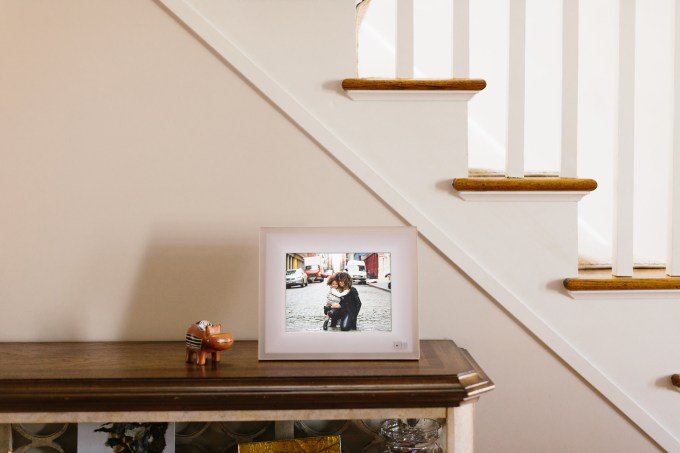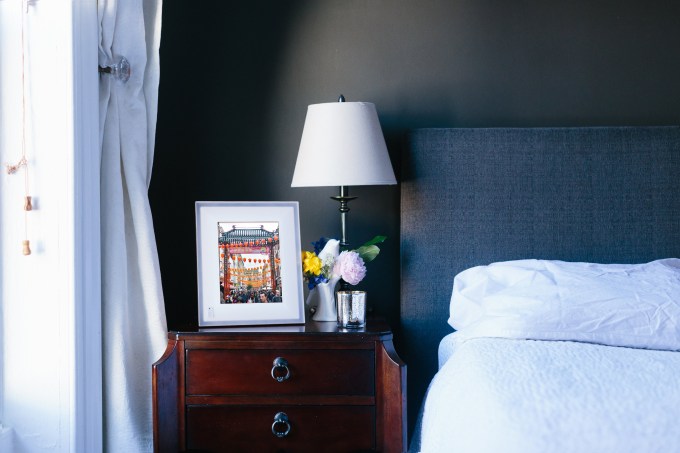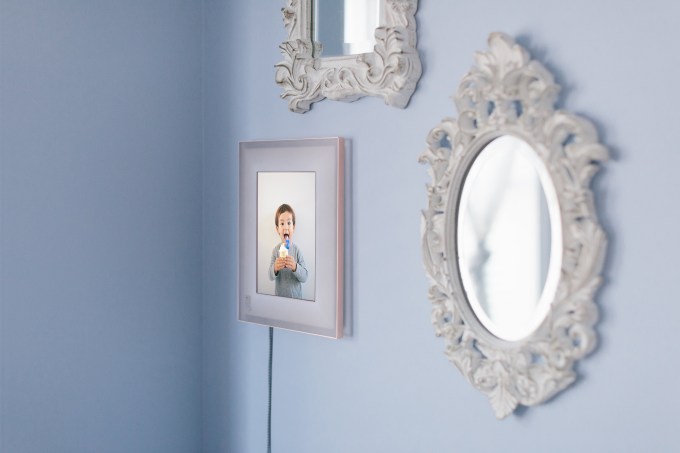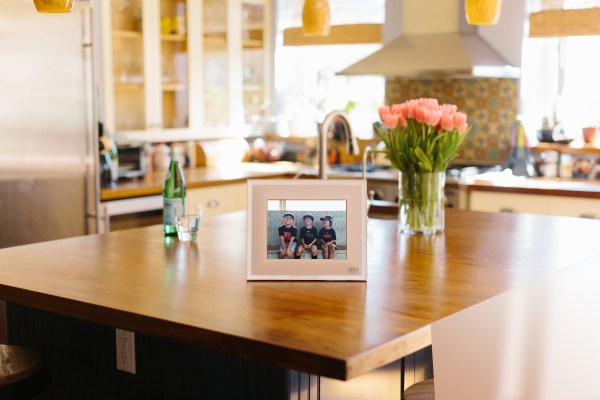We’re taking more digital photos than ever, but we’re not very good about printing them out to enjoy them in our homes. Meanwhile, the digital picture frame market has filled with cheap products that haven’t kept up with technology developments, like ubiquitous Wi-Fi, better photo quality, and higher resolutions, in order to instead chase ever-lower price points. Aura aims to pick up where the industry left off, by offering a digital picture frame that’s beautiful enough to be hung on the wall, but also takes advantage of modern technology, like retina displays, mobile apps, facial recognition, gesture control, and sensors.
The end result is a digital picture frame that’s actually not terrible…in fact, it may even be something to lust after.
Aura was founded by Abdur Chowdhury, the Summize founder who became Twitter’s Chief Scientist, and CTO Eric Jensen. It’s the latest product from their company Pushd, which previously had tried its hand at mobile applications.

The co-founders had both had horrible experiences with the digital picture frames they had bought themselves, which prompted the idea for Aura. They realized there was opportunity to innovate in the digital picture frame market, which had not evolved with the times.
“When we looked at the digital picture frame market, we were shocked at what we found,” explains Chowdhury. “It was and is the anti-technology story. 2006 they take off, but in the next decade, the resolution has not changed. Many no longer exist, and those with Wi-Fi are all but gone. It was a market, in my opinion, ahead of its time, in that the technology did not meet the consumer’s expectations,” he says.
With Aura, the team has built an attractive, 8×12 picture frame that comes in two colors, ivory with rose gold trim or black with charcoal trim. The frame is acrylic, is edged in anodized aluminum, and the kit comes with a stand or accessories for wall hanging. Unfortunately, there’s still a power cord, but it’s wrapped in a cloth material to make it less garish.
[gallery ids="1395076,1395078"]
Meanwhile, the screen is basically the same retina display in your iPad (2,048 x 1,536 resolution), which makes pictures look really crisp and clear.
But what makes Aura interesting, also, is its use of technology in terms of interacting with the device and feeding it content. You use the accompanying mobile app to sync an album you create to the device, or you can take advantage of Aura’s facial recognition software to automate the process.
[gallery ids="1395072,1395075,1395071,1395069,1395068"]
The app will identify the faces in your photos, then you can toggle on a “Smart Select” feature to automate updating the frame with images. The software not only identifies which photos to send, and continues to update as you take more pictures, it also filters out blurry and bad photos – like those with your eyes closed, duplicates, and those that won’t crop well. There’s a nudity filter, too, for privacy’s sake.
Plus, you can invite family members to collaborate on albums, for a more social experience.

In addition, the frame includes sensors that determine if you’re in the room, and then only changes the photos after you’ve left. That way, when you return, you’re always greeted with a new and different experience. And it can sense when you’ve shut off the lights, so it will turn off, too.
Another clever feature is gesture control. That is, you can use “Minority Report”-like swipe gestures at the sensor to move back and forth between your photos. (I was able to test this myself, and it worked fairly well, though there’s a slight lag. It’s something I could see kids having a lot of fun with, however.)

Though the team was not planning on raising funding, when they talked with Spark Capital GP Kevin Thau, he was interested in this idea of a device that’s ambiently aware of you, and trying to display what you love the most. Spark Capital ended up funding a $6 million Series A for Aura, the company announced this week.
“It’s crazy…we spend so much time in our homes and never surround ourselves with all of the wonderful memories we have captured,” writes Thau, in a blog post.
In the future, you’ll be able to daisy-chain together multiple frames to display photos selected through the software, and the company will eventually expand to include more frame sizes and colors.
The current frame costs $399, which makes it less of a competitor to those low-cost rivals bought for the grandparents, and more like something you buy for yourself, for your own home.
“We think about this product less as a gadget – historically, that’s what this category was. We wanted to make a truly beautiful picture frame, that also happens to be very smart,” explains Jonathan Wirt, Aura’s head of marketing, of the price point and target consumer.
Aura is not yet shipping, but the website is now taking sign-ups. Subscribers will be notified when they launch. At that time, orders will be accepted online, and frames will ship in about a week.
